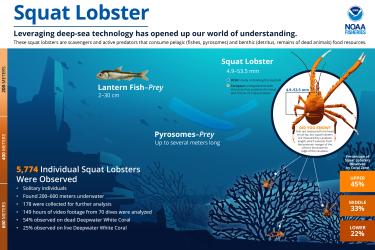The report, The Future of Aquafeeds, distills input from researchers, stakeholders, and the public on options for alternative ingredients for aquaculture feeds and suggests areas for future research.
Its findings, recommendations, and directions for research help identify and prioritize new and ongoing efforts to be conducted and funded by NOAA, USDA, and other partners under the ongoing NOAA-USDA Alternative Feeds Initiative.
The Future of Aquafeeds was the product of two experts’ panels that examined the economic, human health, environmental, and practical implications of various alternative feed options. Foreign and domestic scientists with expertise in human health, agriculture, seafood processing, ecosystem services, fish nutrition, physiology, economics, and bio-fuels participated on the panels along with members of industry and environmental groups.
The final report was subject to and incorporates public comment. It was written by scientists at NOAA, USDA, USFWS, and academia.
Select Key Findings of the Report
- Fish meal and fish oil are not nutritionally required for farmed fish to grow meaning that even carnivorous fish can be fed diets containing no fish-based ingredients. Aquaculture is among the most efficient ways to produce high quality animal protein and for human consumption.
- The net environmental effects of the production and use of alternate feeds should be considered. Some options include recovery and utilization of fisheries and terrestrial animal processing waste, the by-products of biofuel production, and numerous crops currently used for terrestrial animal production.
- Solutions need to be cost-effective. Change already is occurring in the feed industry. As fish meal and fish oil prices rise, the feed industry is developing and using other sources of protein and fat.
- It really comes down to a couple of key nutrients. The demand for long chain omega 3-fatty acids for both direct human consumption and feed ingredients is likely to increase beyond the amounts available from marine resources. Fish processing trimmings and marine algae production are two viable options to produce these long chain omega-3 fatty acids.
